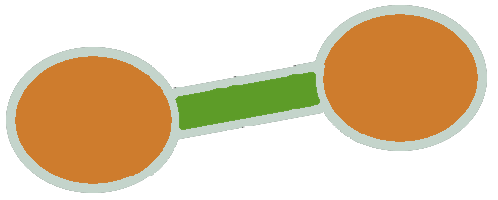Ninatoka
 concept
conceptCrocus sativus (saffron)
Saffron has intensive fragrant with slightly bitter taste and produces a bright yellow-orange solution when soaked in warm water.[10] Its stigma was shown to contain carbohydrates, minerals, mucilage, vitamins B1 and B2, and pigments. Crocin, crocetin, carotene, lycopene, and gigantic[11] anthocyanin, alpha-carotene, beta-carotene, and zeaxanthin are the oil-soluble pigments that can be found in the stigma.[12] The color of saffron is the result of degradation of carotenoid compounds named crocin. According to Wallis,[13] crocin constituent of saffron, which highly related to its intense color, is the natural water-soluble carotenoid. Crocetin in C. sativus L. is a water-insoluble conjugated polyene with two carboxylic acid residues.[14] Crocetin esters or also known as crocin, which is hydrophilic and water soluble, are usually found in the saffron extract in which α-crocin, the glycosyl ester of crocetin, is the main contributor for the significant bright yellow-orange color of saffron.[15] Saffron has a unique flavor that is related mainly to the glycoside picrocrocin.[16] Picrocrocin is responsible for the unique flavor of C. sativus L., which is found to be stable in fresh raw saffron and broken down when heated to release.[17] Specific essential oils of the flower contribute to the sweet fragrance of saffron. The principal constituent of total essential oil of C. sativus L., safranal is a carboxaldehyde volatile compound formed by deglucosylation of picrocrocin.[16] Saffron is widely used in food processing industry as colorant and flavoring agents. The essential oils also comprised several terpene aldehydes, ketones, and terpene derivatives (pinene and cineol).[10] The secondary metabolites present in the petals of C. sativus L. are tannins, anthocyanins, and flavonoids, which include rutin, quercetin, luteolin, hesperidin, and bioflavonoids. Those compounds have been reported to have many pharmacological activities, including anti-inflammatory,[18] antinociceptive,[19] and blood pressure lowering effects.[20]
Ref:
J Pharm Bioallied Sci. 2018 Oct-Dec; 10(4): 173–180. doi: 10.4103/JPBS.JPBS_83_18 PMCID: PMC6266642 PMID: 30568374 Mohammad J. Siddiqui, Mohammed S. M. Saleh, Siti N. B. Binti Basharuddin, Siti H. Binti Zamri, Mohd H. bin Mohd Najib, Muhammad Z. bin Che Ibrahim, Nur A. binti Mohd Noor, Hanin N. Binti Mazha, Norazian Mohd Hassan, and Alfi Khatib
Join Ninatoka!!
NinatoKa's goal is to support you as a therapist in unravelling the illness pathway from symptoms to cause, and to help you detect potential interventions.
Go to Explore to start your discovery!
Go to Learn to scroll through newly added data.
Go to Contribute to contribute to the Ninatoka database.
You can rate content up or down and add comments if you agree or disagree.



